Take the following steps to become a personal trainer:
- Select your personal training certification
- Study and pass your certification exam
- Apply for jobs or begin marketing yourself to potential clients
- Provide top-notch service to every client
- Dial-in your desired career path
- Complete continuing education in-line with your career goals
This guide teaches you how to become a personal trainer, based on my experience becoming a personal trainer and coaching many other aspiring personal trainers towards a successful career in the fitness industry.
In this article, I cover the following aspects of becoming a certified personal trainer:
- Fulfilling certification prerequisites
- Selecting the best fitness certification for your goals
- Studying for and passing your fitness certification exam
- Updating your resume, obtaining insurance, and looking for employment
- Committing to continuing education
By the time you finish, you’ll know how to be a personal trainer and how to get your personal trainer certification. Plus, you’ll learn the answer the question: is it hard to be a personal trainer?
From there, you can kick start your new career in the fitness industry and help clients reach their fitness goals.
If you feel overwhelmed, be sure to take the quiz to help decide which personal training certification makes the most sense for you.
Without further delay, let’s get after it!
![How to Become a Personal Trainer in 6 easy steps [Updated [year]] 7 How to become a personal trainer](https://www.ptpioneer.com/wp-content/uploads/2020/06/h1.png)
Becoming a personal trainer can start a rewarding career in the fitness industry. Generally, becoming certified with any of the best personal trainer certifications can launch you toward success as a fitness professional.
Requirements to be a personal trainer
Virtually every training certification will require cardiopulmonary resuscitation training (CPR) as well as AED training. You also generally need to be 18 years of age and have a high school diploma or equivalent education.
Depending on your long-term career goals, certain certified personal trainer (CPT) courses might make more sense for you than others.
For example, if you plan to look at nutrition certification programs or online personal trainer certifications, consider which baseline CPTs might be best for those career paths. Fitness trainers have so many options in the the modern industry, from yoga to Pilates, strength and conditioning, and general population training, the industry is wide open.
To find out which personal trainer certification is best for you, take my quiz below.
personal trainer education requirements
In the United States there are no legal education requirements to be a personal trainer. However, bachelor’s degrees in exercise science, kinesiology, or exercise physiology can be helpful on top of earning your personal training certification.
Although getting a personal trainer certification is the first step in becoming a personal trainer, for long term success, I recommend looking into a nutrition certification as well. Exercise science is not enough to truly delivery results if you do not have a firm grasp of nutrition as well.
After all, the physical training in the actual session is just half the battle. Without addressing the nutritional component of fitness, it’s much harder to attain real fitness goals.
Combining a nutrition coaching credential with your personal training certification allows you to deliver better results to your clients, ultimately allowing you to charge more as you get a reputation for successful client transformations. (Additionally, dual certification makes you more attractive to potential clients from the start.)
I also recommend specializing as soon as possible. A fitness specialization allows you to serve a specific clientele or deliver a particular training style.
Examples of fitness specializations include corrective exercise, group fitness coaching, and strength and conditioning coaching.
Overall, trainers with specializations tend to earn more money and have greater career success than non-specialized trainers. In fact, becoming a highly specialized trainer can even lead to better income than having a bachelor’s degree in exercise science or kinesiology without additional fitness certifications. I say this as someone with a college degree in kinesiology.
How Do I Become a Personal Trainer?
To become a personal trainer, you’ll need to select the right personal trainer certification for your needs, study and pass the CPT exam, and begin searching for job opportunities or growing your client base.
Completion of your personal trainer certification gives you the foundation to develop fitness programs and routines of the highest standard. You also can give better advice for your specific niche clients about the best standards for their unique physiology and needs.
Becoming a sought-out expert in a specific fitness area is far more lucrative than attempting to chase “any and every” type of client.
Sadly, the price of getting double- or triple-certified adds up quickly.
As such, I highly recommend looking for bundle deals when shopping for your CPT certification.
One of the best bundles in the fitness industry is the ISSA Elite Trainer package.
This package contains the ISSA CPT as its baseline personal trainer certification, which is by far my top choice for the best personal trainer certification on the market.
The Elite Trainer bundle also includes the ISSA nutrition coaching certification on top of a third certification in an ISSA fitness specialty of your choice.
The full Elite Trainer package costs less than half of the full retail value of the three certifications.
If you decide to choose the ISSA as your personal training certification, the Elite Trainer bundle is a no-brainer.
Sometimes, the ISSA also runs Elite Trainer deals on their main website.
If they currently offer a discount on the Elite Trainer package itself, it’s tough to pass up.
For a deeper look at the top CPT programs in the industry, check out my article breaking down the best personal trainer certifications.
You can always get a sneak peek at my top choices for the best personal trainer certificate by checking out my free ISSA study guide, NASM study guide, or ACE study guide (hint: these are my top choice for CPTs).
If you plan to get into strength and conditioning, especially for athletes, consider checking out my CSCS study guide to see what this challenging but rewarding certification offers.
While your specialization will certainly affect your personal trainer salary after employment, your own goals and personality should be the primary factors in which direction you go.
And don’t worry about how long it will take to become a personal trainer: If you follow the steps I laid out in this article, you will be well on your way to an amazing career in the fitness industry.
1. Fulfill CPT Prerequisites
So what does it take to be a personal trainer?
The first and one of the most important steps to becoming a personal trainer is fulfilling the CPT prerequisites.
Virtually every NCCA-accredited fitness certification has the following prerequisites in addition to being 18 years of age:
- High school diploma or equivalent
- Certified in adult CPR/AED through the Red Cross
That should be your first priority if you have yet to graduate high school or finish your GED.
Next, you must complete your adult CPR/AED certification, typically through the American Red Cross.
Every reputable certifying agency will require you to be certified in Cardio Pulmonary Resuscitation (CPR) and Automated External Defibrillator (AED) before taking their exam or even signing up for the certification program.
Many prospective trainers consider CPR/AED certification as ticking a box on your CPT application. However, this is the wrong mindset to have.
Physical activity has inherent risks, especially when dealing with deconditioned clients who may have comorbid cardiovascular health issues.
Providing CPR/AED care during a cardiac emergency is vital for ensuring client safety. It is an absolute must for anyone working in a fitness center or gym environment.
Generally, you are not allowed to sit for your CPT exam until you possess this certification, which is typically valid for 2 years.
The good news is that getting CPR/AED certified is easy, and the Red Cross has locations in virtually every major city.
Exclusive PTP CPT Offers |
||
|---|---|---|
Gold Standard Cert | Most Popular Cert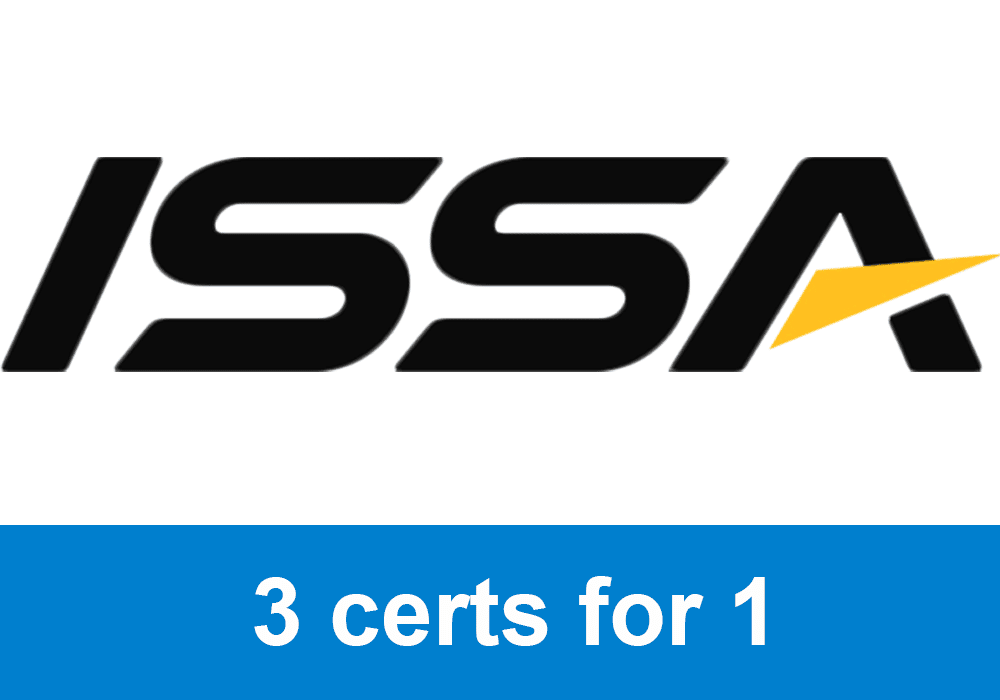 | Best Study Materials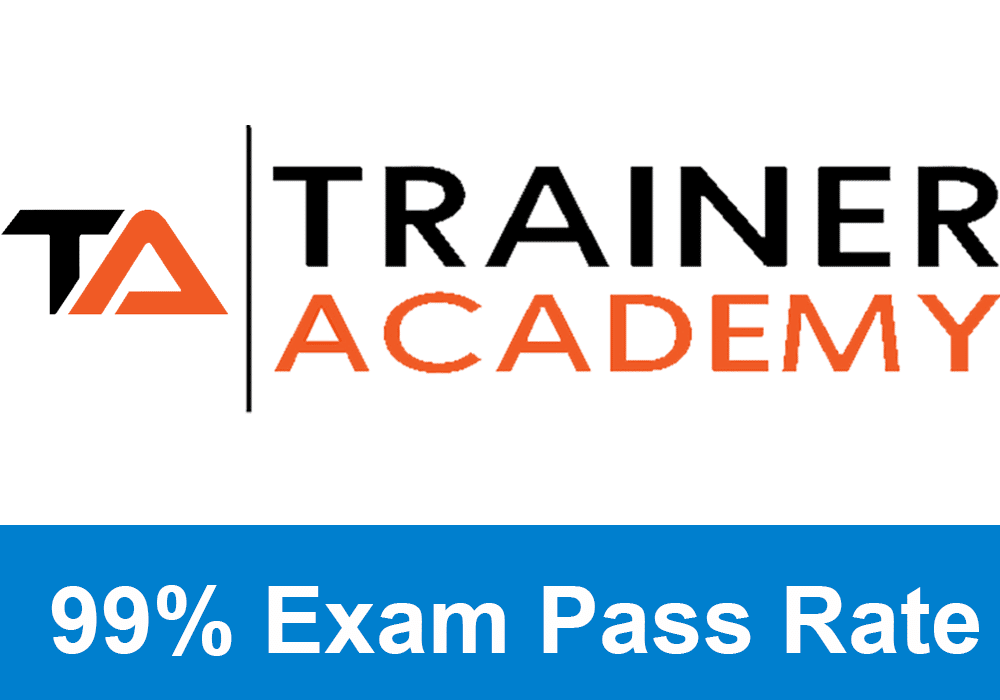 |
A Good Option | A Good Option | Best CPT for you? 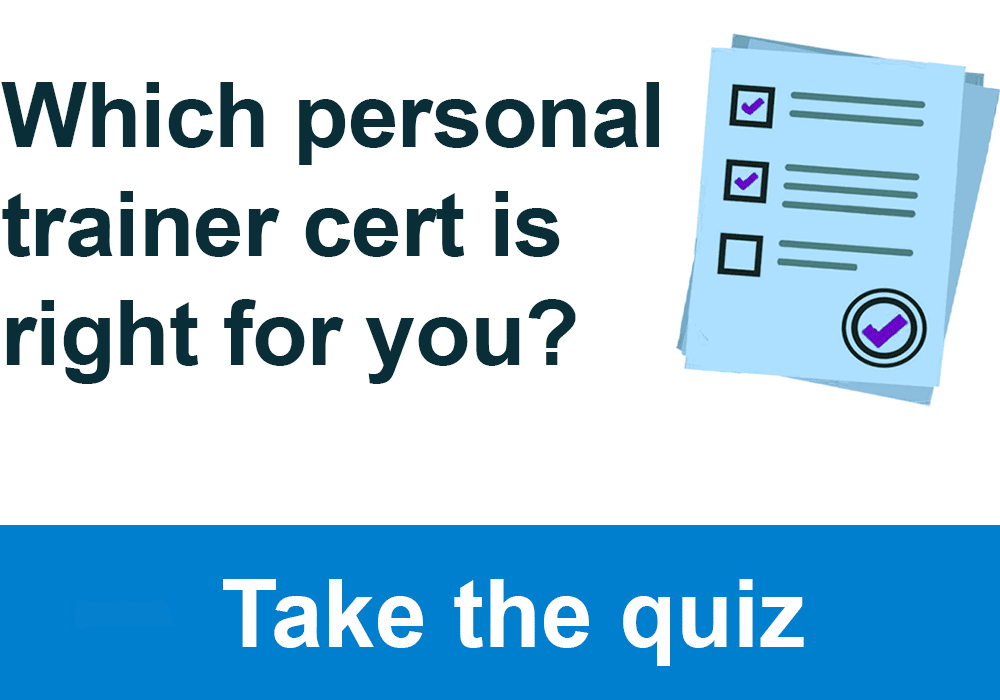 |
Furthermore, some health clubs and fitness facilities will periodically offer CPR classes, so be sure to check out your local options.
It’s also worth checking out a Red Cross First Aid certification, which is often offered in conjunction with CPR/AED.
Note that if you are still working on your high school education, you can knock out your CPR/AED certificate simultaneously.
CPR/AED classes typically last one or two days, so getting it done on the weekend will allow you to hit the ground running once you get your GED or equivalent.
Although most personal training certifications do not have additional requirements beyond what I discussed above, you should always check the specific requirements once you choose your preferred CPT certification to ensure you meet the criteria.
In addition to the “hard” prerequisites, there are a few “soft personal trainer prerequisites” you should be aware of as a new or prospective trainer.
Generally speaking, professional trainers display the following qualities and skills:
- Motivational skills
- Organizational skills
- Social skills
- The ability to maintain professionalism
- Behavioral coaching
If you are a new trainer and feel you lack these skills, don’t worry! You’ll learn them through real-world experience as you work in fitness, and you can develop these ‘soft’ training skills throughout your career.
With that said, one of my biggest tips for new personal trainers is to focus on social and professional skills. Your certification will handle the technique and programming components, but you can learn only so much from a textbook.
These are far from the only important qualities of a personal trainer. Your unique personality and interests will ultimately help you connect with the types of clients you want to train.
2. Select your preferred Personal Trainer Certification
With so many certifications on the market to choose from, you might feel overwhelmed when selecting the best fitness cert for your goals.
Regardless of your certification, you must choose an NCCA-accredited certification to ensure you become a successful personal trainer.
NCCA stands for National Commission for Certifying Agencies and represents the gold standard requirement for ensuring your certification has been vetted by experts in the field. An NCCA-accredited certification also represents the most up-to-date knowledge in the profession.
The certification you choose will depend primarily on which population of clients you want to work with.
For example, training general clients who need corrective exercise is a different focus than training athletes for sports performance.
The following are some of the top NCCA accredited personal training certifications:
- International Sports Sciences Association (ISSA)
- The National Academy of Sports Medicine (NASM)
- The American Council on Exercise (ACE)
- The American College of Sports Medicine (ACSM)
- The National Strength and Conditioning Association (NSCA)
My overall top pick for CPT certification is the ISSA CPT, followed closely by the NASM CPT and ACE CPT, although these are far from your only choices.
As I mentioned, if you do choose the ISSA CPT, it is highly advisable to look at the ISSA Elite Trainer Program.
The Elite Trainer package includes the CPT on top of the nutrition coaching certification and an additional specialist certification for a marginal increase in the cost of the CPT program alone–and a fraction of the cost of the retail value of each certification.
Checking directly on the ISSA website is the best way to view any additional promotions.
If you find any Elite Trainer deals, it’s worth considering.
If you have a specific gym in mind where you want to work, you should check which certifications that gym will accept.
Finally, you can take the quiz to determine which CPT is the likely best fit for your career goals.
Unless you have prior experience, the personal fitness trainer program you choose will greatly impact your personal trainer skills on day one of the jobs.
A great CPT certification teaches you the following:
- Basics of physical fitness training
- Designing exercise programs
- Working with special populations
- Leadership skills
- Personal training business skills
As I said, my top pick for mastering these skills is the ISSA personal trainer certification; however, becoming an ACE certified personal trainer or NASM certified personal trainer are also great options.
While most personal trainer certification costs are roughly the same if you are on a tight budget, many cheap personal training certifications available that still provide all the value you need to start training clients.
3. Study and pass your CPT exam
Now that you have completed your prerequisites and selected your certification, it’s time for the meat and potatoes, or perhaps the “chicken and broccoli,” of getting your CPT cert: studying for and passing your CPT exam.
The overall difficulty of the personal training certification you choose–plus your background in exercise science–will determine exactly how much preparation you need.
Logically, easier personal training certifications generally require less study preparation.
Be aware, however, that no NCCA-accredited fitness certification is easy enough to pass without preparation.
Starting with a free personal trainer study guide is a good way to kickstart your CPT exam prep.
Don’t underestimate any CPT exams, lest you risk failing your first attempt and potentially incurring a hefty reexamination fee.
For all major CPT certifications, you can choose between purchasing study materials directly from the organization, typically at a hefty price, or finding a third-party option.
Third-party study guides offer an excellent and more affordable alternative to the full-price packages from the main organization.
My students have great things to say about the Trainer Academy CPT Prep Courses, including an exam pass guarantee and study guides, practice questions, and flashcards.
These personal trainer courses will speed up your study time and improve passing rates.
There are many other great third-party options as well, so do not feel limited to Trainer Academy.
Just be sure your study course includes personal trainer practice exams.
Note that for all accredited fitness certifications, you do not need to purchase the study materials from the certifying agency itself.
However, if you would prefer the full packages from the organization, that option is always on the table.
4. Update resume, obtain liability insurance, and look for employment
Assuming you passed your CPT certification exam, congratulations!
It’s now time to build your personal trainer resume, obtain personal trainer insurance, and look for employment.
While the clients you train are unlikely to see your resume, potential employers such as fitness centers and gyms will need these items before deciding to interview you.
If you are stumped on how to get hired as a personal trainer, I highly recommend finding a gym where you want to work and applying directly.
Also, familiarize yourself with the specific personal trainer job description to ensure you properly tailor your resume and interview responses based on the employer’s needs. On the same note, be sure you completely understand your personal trainer duties and responsibilities.
The best gyms to work as a personal trainer depend on which personal trainer specialization you want to choose.
Additionally, one of the benefits of becoming a personal trainer is having access to the gym where you work, so if you like the vibe at a certain gym, I’d recommend applying there.
Exclusive PTP CPT Offers |
||
|---|---|---|
Gold Standard Cert | Most Popular Cert | Best Study Materials |
A Good Option | A Good Option | Best CPT for you?  |
If you aim to build your own personal trainer studio from the get-go, your initial resume will matter less. In this case, the personal training equipment you need will be a higher priority task.
However, updating your resume is still a useful exercise.
If you have no prior experience with personal training, don’t worry. You can still show prospective employers that you’re a professional who knows how to show up on time, are responsible, and can stick with a company. To do so, list any previous jobs you’ve had for over a few months and any references willing to vouch for you.
If personal training is the first job you’ve ever applied for, don’t worry. If that is the case, you are probably fairly young, and employers will be less put off by a lack of work history.
Once you have an updated resume, obtaining personal trainer insurance is important, even if you plan to have an employer.
The good news is that personal trainer liability insurance is fairly easy to obtain. Once you are certified, you can buy insurance from several providers at an average cost of about $150 per year.
Having PT insurance will protect you from liability should your client suffer an injury during training. It is also typically required in the scope of practice for all fitness professionals.
Medical and legal bills add up quickly if you get sued by a client, and personal trainer insurance is a relatively cheap way to “cover your glutes,” so to speak, from serious financial damage.
Now it’s time to find a gym to work at: Your best bet here is to dress professionally, go to the gym you are interested in with a resume in hand, and ask the front desk to speak with the personal training coordinator or hiring manager.
If they aren’t available, ask to leave your resume with the staff to be delivered to the relevant manager’s desk. If that request is an issue with the gym, chances are it wouldn’t have worked out anyways.
You still have options if you follow the above steps and have no luck getting calls back.
Browsing job boards is another great way to see which gyms in your area are actively hiring trainers. You may encounter gyms and studios you would not have otherwise known about.
If you still have trouble finding personal training employment, getting your foot in the door at a gym may require you to be hired as a gym staff member in another department.
Examples include working the gym floor to keep equipment clean or other staff positions. Just be sure the management knows your goal is to become a personal trainer.
Getting related experience working other positions at a gym is another one of my tips for personal trainers if you are having trouble finding a job at a gym.
If they do not allow you to train clients within a few weeks or months, be prepared to look for other opportunities: The good news is you will now have a recent work history in a relevant environment.
I want to emphasize that finding your first personal training job can be very demoralizing at first. You will probably hear “no” at least a few times before finding a place that will bring you on.
Don’t worry, though; once you get hired and get momentum going with your training career by securing a few clients, it will be much easier in the future to find employment, build a private practice, or continue growing within your current gym.
If, for some reason, you still cannot find employment after pounding the pavement and browsing job boards, or you continually get rejected when applying, consider looking for a personal training internship.
While these may pay less or be experience-only gigs, having hands-on experience dealing with clients will boost your resume when you start looking for employment again.
Regardless, sooner or later, you will find a gym or fitness center that will give you an interview and your first personal training job.
5. Build your client base
Now that the “easy” steps are done, it’s time to build your client base and change people’s lives through fitness.
Of course, this is also where you start making money as a trainer to keep the whole operation going.
The best methods for getting clients to vary depending on your employment situation. Expect to have a flexible lifestyle since many clients will train in the morning or evening, while the middle of your day may be slower.
Learning how to sell personal training is arguably the most crucial skill for being a successful personal trainer since obtaining and retaining personal training clients will make or break your fitness career.
Building a client base involves some sales funnel.
A sales funnel might sound fancy, but it just refers to the overall steps resulting in a “prospect,” which is another way to refer to potential clients, becoming a paying personal training client.
The typical personal trainer sales funnel looks something like the following:
- Acquiring leads via marketing
- Following up with prospects and setting up consultations
- Closing the sale
- Training the client
- Renewing the client (for non-automated payment systems)
Each of these steps has its own skill set and methods. The fitness club you work at often has its own sales funnel to bring in clients.
Personal trainer marketing is the first step of the sales funnel.
There are many great personal training marketing ideas out there, including the following:
- Flyers, posters, and other physical advertisements
- Organic and paid social media advertising
- Word-of-mouth advertising
Word-of-mouth is probably the best form of advertising. However, building up a good word-of-mouth network takes longer because you must already have satisfied clients who begin recommending you to friends interested in fitness.
A direct recommendation from a trusted friend is arguably the most powerful form of advertising.
After all, you can claim five-star service and results in your ad, but a direct endorsement from a friend blows the best advertisement out of the water to bring you interested hot leads that turn into paying clients.
In line with this, getting reviews from current clients on your social media or business page builds the additional social proof that can turn you into a lead-generating machine without running expensive, flashy ad campaigns.
This depends on you providing excellent service to every client you train. Among other things, tracking client progress, being a great listener, and knowing your programming and exercise technique coaching skills are the best ways to ensure your clients leave raving reviews.
Once a lead reaches out to ask about training and gives you some form of contact information, they are now a prospect.
At this point, following up is key. You don’t want to be too pushy, but following up immediately to the first contact is crucial to building the prospect’s trust in your business.
If they do not schedule a consult, follow up in 24 to 48 hours to ask if they still want to come in for a free consultation.
Usually, a truly interested prospect will schedule a free consultation without much hassle.
If you follow up several times with no interest, the individual is probably not interested enough yet to become a paying client.
Once you get your consultation scheduled and your prospect is in front of you, it’s time to build rapport, perhaps offer a free training session (especially if you do not have many clients yet), and ultimately, discuss pricing and ask for the sale.
I personally stopped offering free sessions after I had enough clients that I wasn’t desperate to close more sales.
Interestingly, I actually ended up closing more sales without a free session. Clients won’t complain about paying for their first session unless you blow the first training session.
Note that big gyms typically offer free sessions to prospects but still pay you as the trainer.
As a self-employed trainer, you do not have the luxury of getting paid when offering free sessions, so that is another consideration depending on your employment arrangements.
Once you close the sale, congratulations!
You now have a paying client and can begin the actual work of being a personal trainer.
6. Commit to continuing education
Just because you have a nice schedule of clients and a steady income does not mean you can rest on your laurels.
In fact, learning how to be a good personal trainer requires an obsession with self-improvement and a commitment to your personal trainer CEUs.
Improving your knowledge allows you to provide better training services and increase your hourly rates over time.
Additionally, CEUs are the time to focus on the different personal trainer specialties to get more personal trainer career information and decide your long-term trajectory.
Even if you know what you want to do, completing personal training continuing education credits is a requirement for staying certified as a personal trainer.
The good news is that there are so many different CEU options for personal trainers. You typically must complete CEUs every two years, although each agency has a different CEU requirement scale and process.
I highly recommend saving money upfront by purchasing a certification bundle when buying your CPT program.
You can often save money on each certification and get ahead of the curve through bundled programs.
The best deal on the market is the ISSA Elite Trainer Program.
The Elite Trainer bundle includes the ISSA CPT, nutrition certification, and third ISSA certification of your choice.
The whole deal comes in at slightly more than the cost of the CPT alone, making it an absolute no-brainer for anyone considering the ISSA CPT.
If there are currently any further discounts on the ISSA, it’s even harder to pass up.
With savings in hand, it’s easy to select the right personal training CEUs for your career.
however You are not limited to the ISSA, and other organizations such as NASM and ACE often bundle certifications as well.
With many great options from many different providers, you can take your personal training career in whatever direction!
The following are a few top personal trainer program CEU options you have on the table:
- Group fitness instructor certifications
- Weight management and weight loss specialist
- Nutrition coach certifications
- Health coach certifications
- Corrective exercise certifications
- Strength and conditioning coach certifications
- Senior fitness specialist
Furthermore, many online personal trainer certifications focus on how to be an online personal trainer. If you plan to work with clients online, these are worth looking into.
On top of your CEUs, you should constantly think about tangential skills such as time management, improving your fitness clients’ motivation, and keeping things interesting by getting creative with your exercises and workouts.
Additionally, be sure to think about important personality traits for personal trainers to help you develop motivating and positive energy when coaching your clients.
can you be a personal trainer without certification?
While you can technically be a personal trainer without certification, it’s highly recommended to get certified before becoming a personal trainer to ensure you have the skills and knowledge to safely and effectively train your clients. Plus, many gyms require you to hold an NCCA-accredited certification.
how to become a trainer at a gym
To become a personal trainer at a gym, determine the certification requirements for the gym where you want to work. Then, get your certification and apply for a job at the gym. If possible, network or connect with the hiring decision-makers at the gym for your best chance of getting hired.
Qualifications of a Personal Trainer
Personal trainer qualifications include a CPR/AED certification, high school education, and achieving an NCCA-accredited personal trainer certification.
Different career paths for personal trainers
Personal training is far from a single career track. In fact, the best personal trainers end up specializing quickly. Top specializations include corrective exercise, group fitness, nutrition, and strength and conditioning.
Components of a successful personal trainer career
The components of a successful personal trainer career include getting your personal trainer certification, delivering exceptional service to your clients, a professional attitude and demeanor, and committing to ongoing continuing education and specialization.
Related careers to personal trainer
Realted careers to being a personal trainer include becoming a strength and conditioning coach, nutritionist, or corrective exercise specialist.
How to Become Personal Trainer: FAQs
What prerequisites do you need to become a personal trainer?
Most NCCA-accredited fitness certifications require high school education and CPR/AED certification. From there, passing your CPT is the final step to becoming a certified personal trainer.
How long does it take to become a personal trainer?
It typically takes 3 to 6 months to pass a CPT certification depending on the difficulty of the exam and your background knowledge.
Do you have to be certified to be a personal trainer?
While you can legally work as a trainer without certification, it is nearly impossible to build a lucrative training career without becoming certified. Additionally, most gyms will require trainers to be certified with an NCCA-accredited fitness certification.
Can I make good money as a personal trainer?
While personal training is not a get rich quick job, there is a high earning potential for skilled trainers in profitable niches and successful gym owners. Trainers employed in a standard arrangement can expect anywhere from $40,000 to $70,000 a year on a full-time schedule. If you choose to be self-employed, your earning potential is theoretically unlimited.
Do you need a degree to become a personal trainer?
Most personal training programs do not require an associate’s, bachelor’s, or master’s degree. Advanced specialties and advanced certifications, such as certified exercise physiologist programs, may have different requirements.
How hard is it to become a personal trainer?
Becoming a personal trainer is straightforward overall. However, a serious study is required to pass your certification. The difficulty of the certification you choose will be the main determining factor in how hard it is to become a personal trainer.
How much does it cost to become a personal trainer?
The cost of becoming certified as a personal trainer depends on which certification you choose. Typical costs range from $300 at the low end to over $1000 if you purchase expensive study packages from the organizations.
Can anybody become a personal trainer?
As long as you fulfill the prerequisites, pass your CPT exam, and are willing to work hard to build and maintain your clientele, anybody can become a personal trainer.
How do you turn fitness into a career?
Turning your passion for fitness into a lucrative career requires an ongoing commitment to providing stellar training services to your clients and a commitment to your CEUs. The first step, as always, is becoming certified as a personal trainer.
How do I get a personal training job with no experience?
You can get a personal training job without experience if you can get a foot in the door at a local gymnasium. Good ways to do this are shadowing personal trainers, getting an internship, or working at the front desk.
Can you work in a gym without qualifications?
Yes, you can work in a gym without any qualifications. There are plenty of positions that don’t require a certification. Some of these include front desk, janitorial duties, membership sales, personal training sales, gym management, and more. To be a personal trainer, you need to get a reputable certification.
Do I need a personal trainer license?
If you are worried about how to get a personal trainer license, don’t worry. There is no such thing.
How hard is it to become a personal trainer?
The most difficult part of becoming a personal trainer is passing your fitness certification exam and finding a job at a gym. However, I have never met anyone who failed to become a personal trainer that stuck with it through the early phase.
What does a personal trainer do?
A personal trainer works with clients to achieve health and fitness outcomes with science-based workout programming and exercise technique coaching.
How To Become A Personal Trainer (YouTube)
How To Become A Personal Trainer (Podcast)
Conclusion: Becoming a Personal Trainer Without a Degree
Regardless of your career goals in the fitness industry, the initial steps to becoming a personal trainer are the same.
It all starts with becoming certified through an NCCA-accredited certification program.
From there, kickstarting your career depends on finding the right employment situation for your personality and career goals and then building your client base.
Finally, it would be best if you committed long-term to your CEUs to advance your career and grow into your full potential as a personal trainer.
If you’re wondering about your exact first step, you can take the quiz to determine the best CPT for your goals.
From there, be ready to dive into life as a personal trainer.
Good luck!
References:
- “Fitness Trainers and Instructors.” U.S. Bureau of Labor Statistics, U.S. Department of Labor, https://www.bls.gov/ooh/personal-care-and-service/fitness-trainers-and-instructors.htm
- “ACE Personal Trainer Salary Survey 2019.” American Council on Exercise, https://acewebcontent.azureedge.net/assetportfoliodownloads/ACE_SalarySurvey.pdf
- “Strengthening Communication Skills with Clients.” National Academy of Sports Medicine Blog, https://blog.nasm.org/newletter/strengthening-communication-skills-clients/
- “5 Essential Qualities to Look for in a Good Trainer.” Breaking Muscle, https://breakingmuscle.com/fitness/5-essential-qualities-to-look-for-in-a-good-trainer
- “Training Requirements for Personal Trainers.” Study.com, https://study.com/training_requirements_for_personal_trainer.html
- “Careers That Require CPR Certification.” CPR Certified, https://www.cprcertified.com/blog/careers-that-require-cpr-certification
- “CPR Renewal & Recertification.” Red Cross, https://www.redcross.org/take-a-class/cpr/cpr-training/cpr-renewal
- “Personal Trainer Certification Comparison.” NFPT, https://www.nfpt.com/personal-trainer-certification-comparison
- “PubMed.” National Center for Biotechnology Information, U.S. National Library of Medicine, https://www.ncbi.nlm.nih.gov/pubmed/18948652
- “Work as a Fitness Trainer.” Australian College of Physical Education Blog, http://blog.acpe.edu.au/index.php/health-fitness/work-fitness-trainer/
- “Personal Trainer Hourly Wages.” Salary.com, https://www1.salary.com/Personal-Trainer-hourly-wages.html
- “Comparing Personal Trainer Certifications.” American College of Sports Medicine, https://www.acsm.org/get-stay-certified/get-certified/comparing-personal-trainer-certifications
- “Trainers: 30 Ways to Make More Money.” IDEA Health & Fitness Association, http://www.ideafit.com/fitness-library/trainers-30-ways-to-make-more-money

 Have a question?
Have a question? ![How to Become a Personal Trainer in 6 easy steps [Updated [year]] 8 ISSA Elite Trainer Certification Logo](https://www.ptpioneer.com/wp-content/uploads/2015/05/elite-trainer.png)
![How to Become a Personal Trainer in 6 easy steps [Updated [year]] 9 How to Become a Personal Trainer in 6 easy steps [Updated [year]] 3](https://www.ptpioneer.com/wp-content/uploads/2023/02/ptp-quiz-desktop.jpeg)
![How to Become a Personal Trainer in 6 easy steps [Updated [year]] 10 How to Become a Personal Trainer in 6 easy steps [Updated [year]] 4](https://www.ptpioneer.com/wp-content/uploads/2023/02/ptp-quiz-mobile.jpeg)
![Wellness Coach vs Health Coach Career Comparison in [year] 13 health vs wellness coach - a side by side image of a health coach and wellness coach showcasing the differences between each profession](https://www.ptpioneer.com/wp-content/uploads/2024/02/Health-Coach-vs-Wellness-Coach.png)
![Life Coach vs Wellness Coach [year] Career Comparison 14 health vs wellness coach - a side by side image of a health coach and wellness coach showcasing the differences between each profession](https://www.ptpioneer.com/wp-content/uploads/2024/02/wellness-coach-vs-life-coach.png)
![What Is a CPT Certification? + Other CPT Questions [year] 15 What Is a CPT Certification? + Other CPT Questions [year] 5](https://www.ptpioneer.com/wp-content/uploads/2023/09/what-is-a-cpt-certification.jpg)
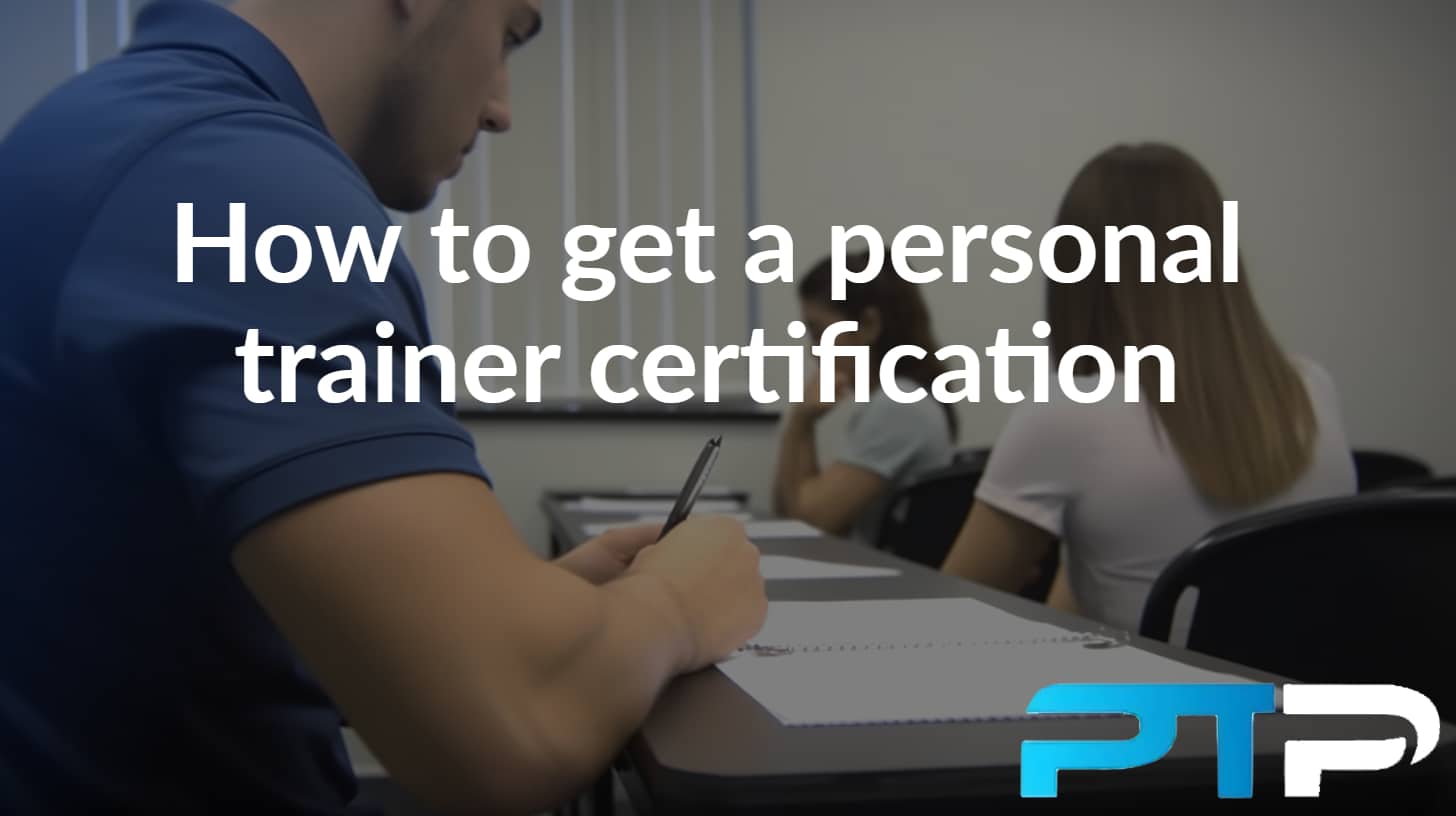
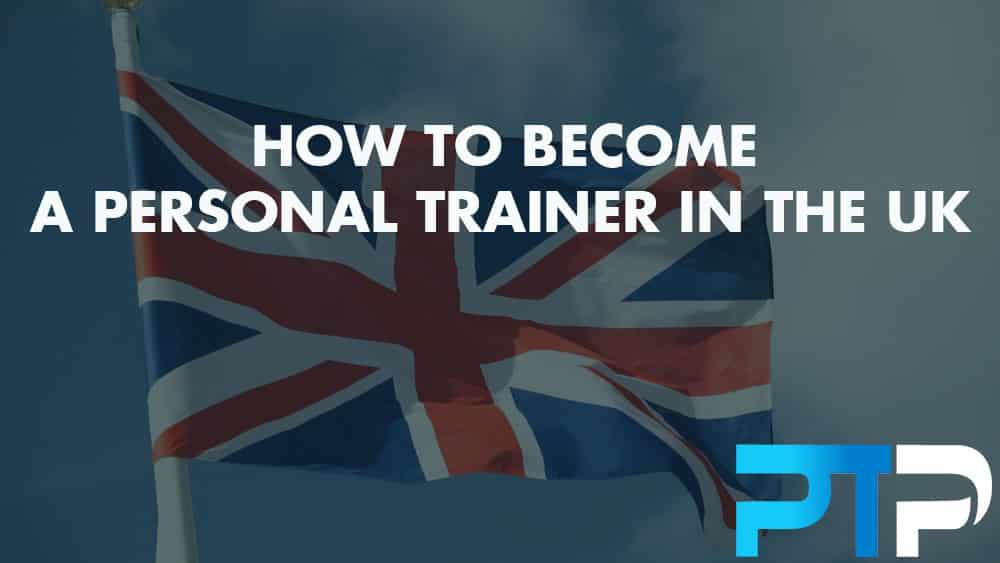
![Yoga Instructor Career - [year] Salary, Prospects & More 18 Yoga Instructor Career](https://www.ptpioneer.com/wp-content/uploads/2021/08/Yoga-Instructor-Career.jpg)

Hi, Very good Information.
My daughter is 13 y/o She loves to do exercises and she plays competitive tennis since she was 5 y/o.
She wants to be a Personal Trainer, but she does not have the require age.
Is there any possibility she can get the training materials but no apply for the certification?
Or an free online place to learn during this pandemic time?
Thanks, -Maria
You can definitely get all these study materials for free. In fact, you can purchase any of the textbooks from any of the personal training organizations listed on my website. That’s a great way to get the knowledge and then when she turns 18, she can get certified.
I currently hold a certificate in nutrition coaching and run coaching and I’m interested in next steps. Do you recommend becoming a full personal trainer or getting a strength cert?
That’s great that you already hold a nutrition certification. The next thing I would do is definitely become a general personal training certification with one of the top five organizations. Afterwards, you can get a specialization certification in strength and conditioning. That’s the route I suggest you take.
Hello,
I love your page! Thank you for explaining the process on how to become a CPT. My first goal is to get my Health Coach Certification though ACE, do you have any discount codes that I could use? 🙂
Thank you!
Hello Yarelis,
That is great to hear you’re starting your journey as a certified personal trainer! A health coach certification is definitely an excellent certification to get. Teaching people how to break bad habits is just as important as putting them through a workout routine. At the moment I do not have any discount codes for the ACE health coach certification 🙁 I’m sorry I couldn’t help you out this, but thanks for stopping by and leaving a comment!
I am very interested in getting my personal training certification but I want to specialize with people whom have had bariatric surgery or people who have had weight loss surgery. what certification would i need and how would i go about getting specialty classes or certifications in this field?
Hello,
It sounds like you need to get a specialization certification. In order to do this, you need to get a general personal training certification first. I recommend either NASM, ACE or ISSA and then after that you can get a specialization certification such as the weight lost specialist from NASM. I hope this helps with your question!
Hi Tyler,
Great info
“If you are still in the process of deciding which personal training certification is right for you, you could even study general kinesiology(exercise science) because there are sections of each certifications curriculum that are virtually the same”
I know there are other guides, books, in regards to this
What option would you recommend for book to purchase for one to pre stud/prepare while deciding what CPT to go to?
To help with studying and to help with the eventual Test
I did not know if you have a resource page
Link if you have one, for your “ credit”:)
I’m more of a textbook hands on
In other wards , what Amazon Book to buy and Or library lighter book to borrow
Thank You
Tyler,
This is such helpful information! Thank you! I passed my ACE personal training exam yesterday! I’m really excited but I am not comfortable yet starting as a personal trainer. I am looking for some sort of shadowing program so I can learn what I’m doing before I take on clients. Do you know of any gyms that offer some sort of training program? If not, do you have advice how to get start started and know what you are doing?
Thanks so much!
Hey Rachel,
Thanks so much and I am really glad that you like the articles. Congrats on getting certified that is super exciting! In terms of shadowing programs, the best advice that I have is to call your local gyms and ask if you could shadow a few of the trainers. Most trainers are totally open to this in my experience. It could also be a good way to get your foot in the door for work. Another idea just to practice is to train friends and family members for free. This is great practice and is beneficial for you as well as the person getting trained! Hope this helps and good luck getting started!
Awesome, user-friendly and thoughtful website. Thank you for sharing your wisdom and insight with us. Much appreciated.
Hi, I’m looking for a pt in Spanish. I live in Florida and I thinking about NCSF, because they have Spanish course but I’m not sure if that certification working in Florida.
Hey Maria,
I am not 100% sure which certifications are provided in Spanish as well as English. In terms of whether or not a specific certification will be accepted in your area, I would go around to local gymnasium’s that are hiring to ask them which certifications they accept and which ones they prefer. I hope this helped
Thank you so much!! This was very comprehensive and informative. I love your other articles on certifications as well. I was so confused about certifications until I found your website!
Hey Kim,
Thanks for the feedback, I appreciate it. Good luck with personal training!
very well explained
Started reading and loved gentle, enthusiastic attitude! Going back to reading now.